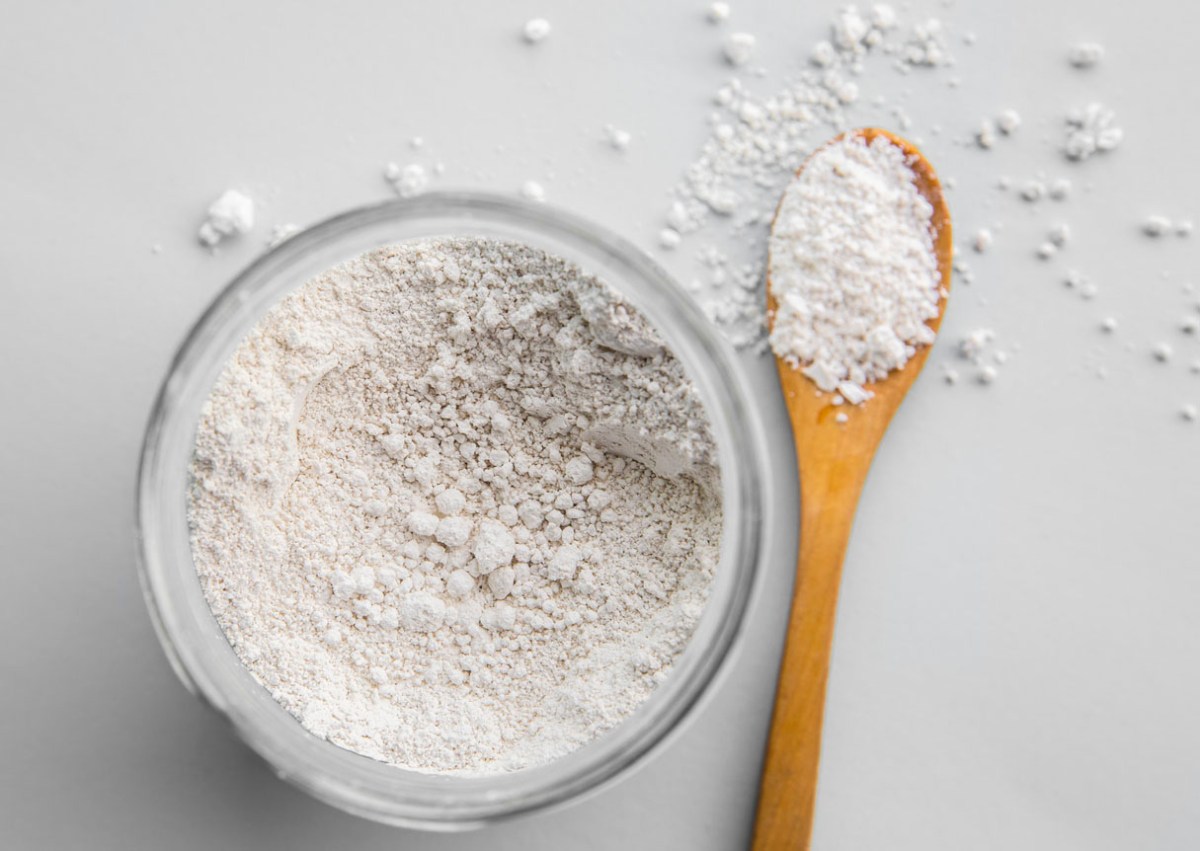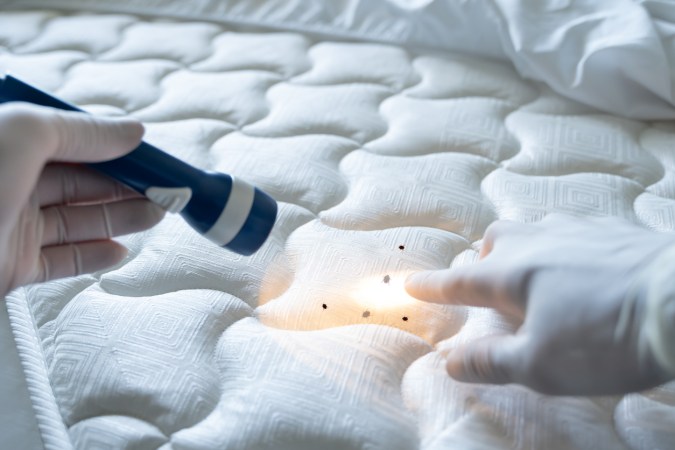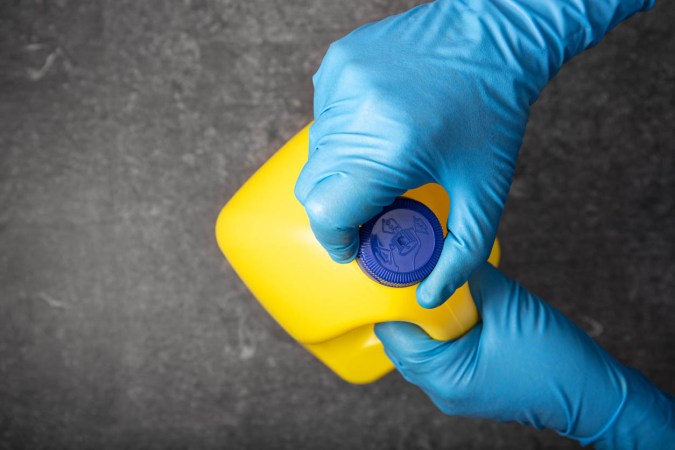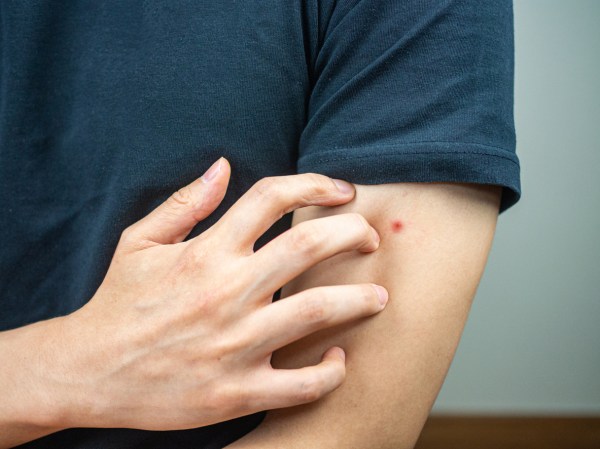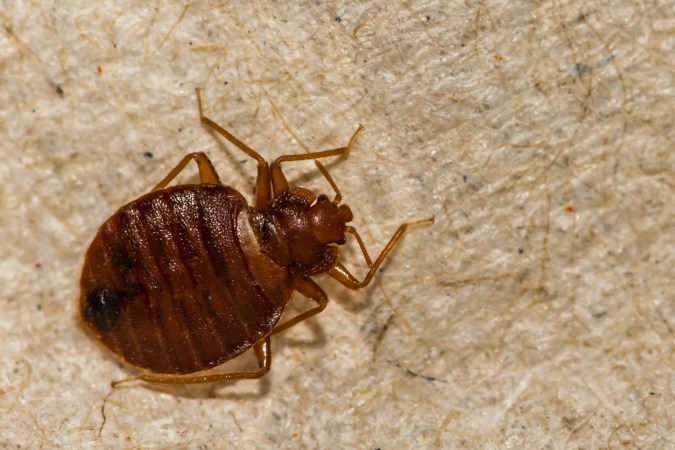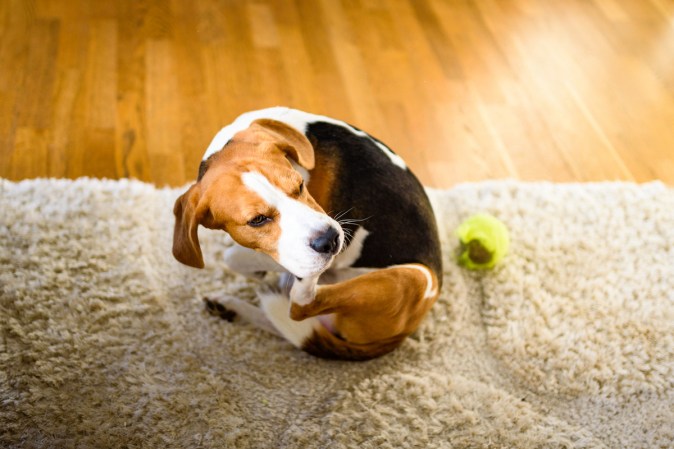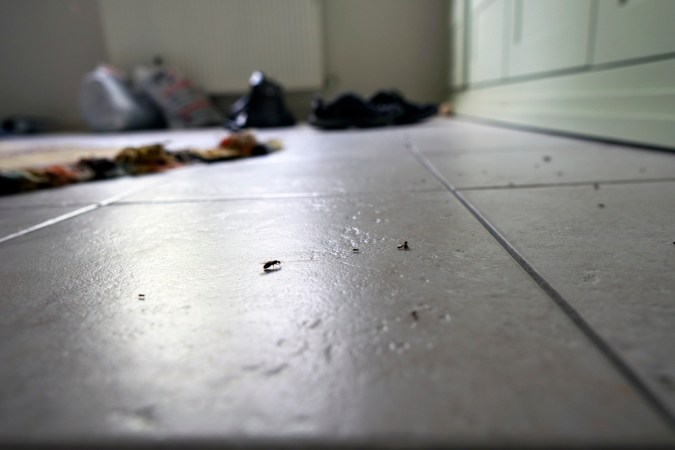We may earn revenue from the products available on this page and participate in affiliate programs. Learn More ›
Q: I recently made the unfortunate discovery that we have bed bugs. I keep seeing something called diatomaceous earth come up as a suggested home remedy. What is this stuff? Does diatomaceous earth kill bed bugs?
A: Diatomaceous earth (DE) is one of the most popular remedies for bed bugs, and for good reason: It’s nontoxic, relatively affordable, and there are a variety of other household uses for DE in case you have some left over. The trade-off is that unlike most commercial pesticides, DE can take an extended period of time to work and varies somewhat in its effectiveness. It is also most effective when used alongside one or more other bed bug remedies. So those wondering, “Does diatomaceous earth kill bed bugs?” will find that it is a great way to kill bed bugs naturally, but it requires a bit of patience and perseverance. Residents will want to read on to learn how to apply diatomaceous earth for the best results.
Diatomaceous earth works as a desiccant to kill bed bugs.
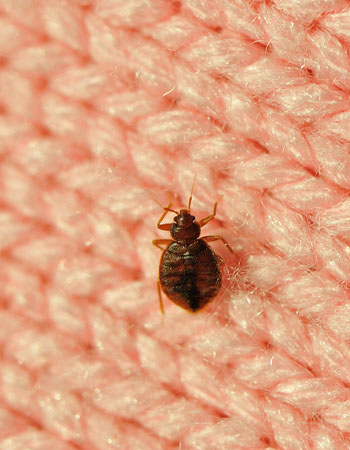
People have been turning to diatomaceous earth for centuries for a variety of household uses because it is both affordable and nontoxic. But what is this mysterious substance, and how does it kill bed bugs? Diatomaceous earth powder is a light off-white color and closely resembles corn starch. What it actually consists of is dried and pulverized algae fossils called diatoms. While diatomaceous earth feels relatively soft, on the microscopic level it has a rough and uneven texture where the particles have been broken apart. It is also a desiccant, which means it is highly absorbent. When insects like bed bugs come into contact with diatomaceous earth, the particles slice at their protective exoskeleton, leaving them vulnerable to the elements. As the substance penetrates their shells, they will eventually dry out and become completely dehydrated.
There are two types of DE, food grade and insect grade, and both can be used to kill bed bugs.
When shopping for DE, you may see two varieties: food grade and insect grade. The main difference between the two is where it is sourced. In order to be classified as food grade, diatomaceous earth cannot consist of more than 1 percent crystalline silica. It also cannot come from mines that contain poisonous elements such as arsenic. So does food-grade diatomaceous earth kill bugs? It does—the difference between this variety and insect-grade DE is that the latter can be less pure, and it is not guaranteed to be free of toxic substances. If there are curious children or pets in the house who could possibly ingest or breathe in some of the powder, it’s safer to opt for the food-grade variety. Some may also wonder, “Does diatomaceous earth expire?” It does not, but it will need to be kept dry to stay good, particularly if it is going to be consumed.
Diatomaceous earth can be applied anywhere bed bugs are spotted, but it can take several weeks to work.
Since DE is not an insecticide, bed bugs must come into direct contact with the powder in order for it to do its job. It can take several hours for a single bed bug to die from coming into contact with DE and up to a few weeks for a significant number of them to be exposed. It’s also worth noting that diatomaceous earth will not have any effect on bed bug eggs, so it’s important to leave it long enough for the eggs to hatch and the adult bugs to become exposed as well (about 10 days). Here’s how to use diatomaceous earth indoors with the greatest effect.
- First, prepare by stripping the bed and washing all the sheets, linens, and blankets in hot water. Clear away any clutter, and wash any clothes that were on the floor.
- To get rid of bed bugs in a mattress, go over it with a vacuum and also sweep up the surrounding floor, paying special attention to crevices like the seams of the mattress, around baseboards, and the corners of the bed frame. Empty the vacuum, and take out the trash immediately.
- Wearing gloves and a mask, use a duster to sprinkle a layer of diatomaceous earth all over the mattress and surrounding floor. You’ll also want to cover other common bed bug hideouts such as nearby furniture, the crevice where carpet meets the walls, inside drawers, gaps between baseboards and the wall, and around windowsills. Repeat this in any other rooms where there may be bed bugs.
- Wondering how to spread diatomaceous earth in hard-to-reach areas? One option is to make a diatomaceous earth spray by mixing the DE with water, but note that this solution won’t be effective until it dries.
- At a minimum, the DE will need about 10 days to reduce a bed bug population, but it may take up to a month for this treatment to have a significant effect. It’s a good idea to vacuum up and reapply the DE every 7 days.
DE can also be used to kill a variety of other household pests.
DE doesn’t just work on bed bugs. What kind of bugs does diatomaceous earth kill? It is commonly used to treat fleas inside the home using a similar method as the one outlined above for bed bugs, and it can also be effective against a variety of outdoor pests. A major benefit of using DE to kill slugs and beetles in the garden is that commercial pesticides can leave harmful chemicals on produce, whereas diatomaceous earth is not toxic and can be easily washed off. Residents can sprinkle a few handfuls of DE on and around plants where bugs have been active. Since diatomaceous earth is a desiccant, it will need to be dry to be effective, so it’ll be important to keep reapplying when it rains or after watering.
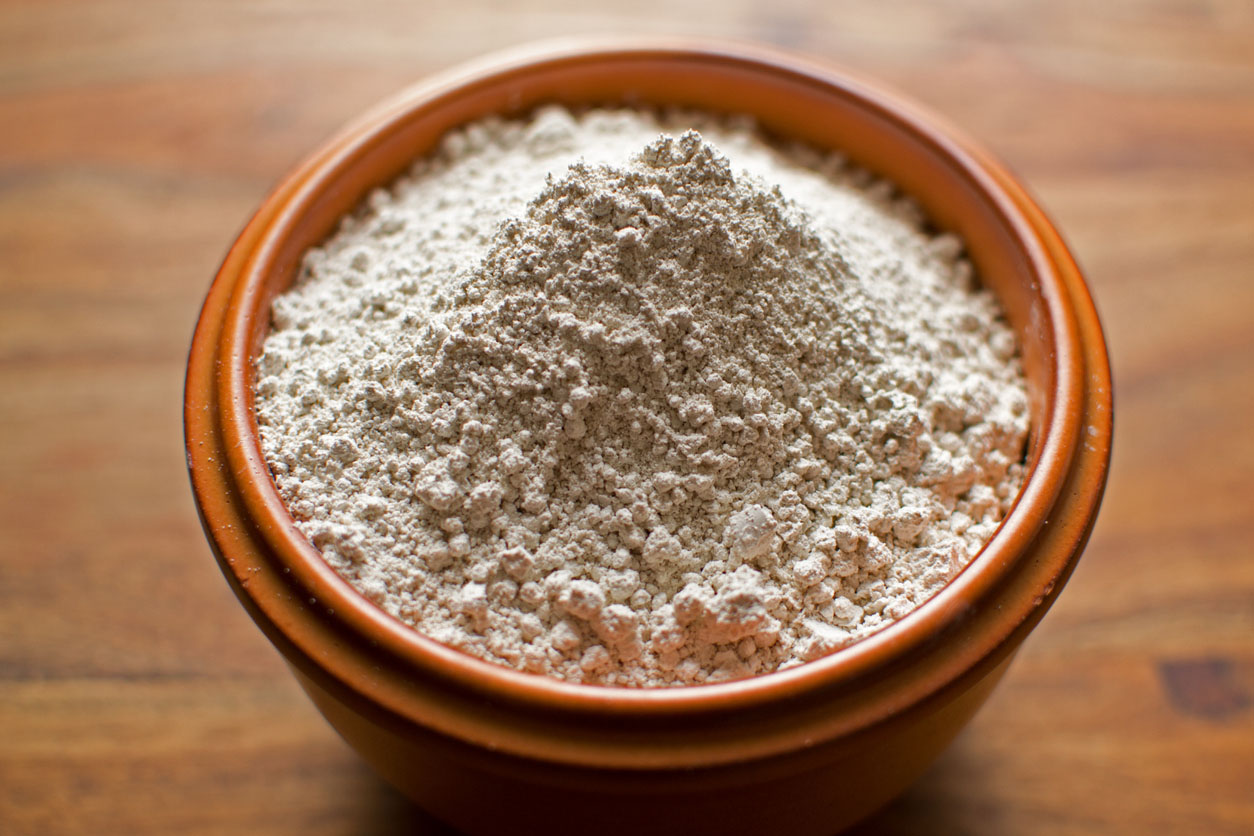
It’s best to use diatomaceous earth with caution, as it can pose a health risk to humans and pets.
As stated, food-grade DE is not toxic and can be ingested by people and animals. In fact, some people recommend using it as a dietary supplement or preservative. However, breathing in diatomaceous earth can be abrasive to the lungs, especially for those with asthma and other respiratory sensitivities. If this happens, diatomaceous earth side effects can include coughing, difficulty breathing, or irritation in the nose and throat. Lots of DE inhalation over time can pose long-term harmful effects and potentially cause disease. The best way to mitigate this risk is to wear a mask when using DE and wait a few minutes for the dust to settle before allowing anyone to enter the room. It’s also a good idea to wear gloves when handling DE as it can dry out the skin over time. Anything other than food-grade diatomaceous earth will need to be used with care away from areas where it could be inhaled or ingested by both people and pets.
Hiring a professional bed bug exterminator is the most effective way to eradicate bed bugs.
Using diatomaceous earth as a bed bug killer can be a step in the right direction, but it has its drawbacks. For one, it can take weeks or months to significantly cut down the number of bed bugs in a home. It also requires bed bugs to have direct, sustained contact with the substance and won’t affect bed bug eggs. For this reason, it can be difficult to know whether the method is working, and it’s almost impossible to tell when the bed bugs are gone for good.
DE can be utilized as a first line of defense, but in order to get rid of bed bugs permanently, the most foolproof approach is to also have one of the best bed bug exterminators such as Orkin or Terminix treat the space. Exterminators are experts at locating hot spots of bed bug activity. They have access to advanced tools and equipment and know how to get rid of bed bugs without endangering the rest of the household. Most also offer re-treatment guarantees, providing peace of mind in case the problem returns after the first visit.
Taking preventive measures can help keep bed bugs at bay.
Contrary to popular belief, the presence of bed bugs is not a symptom of a dirty or unhygienic home. These pests are opportunistic and will invade any space that harbors what attracts bed bugs: a blood meal. That being said, an uncluttered home is much less welcoming to pests of any kind as it lacks places for them to hide. Vacuuming frequently will also help pick up stray insects and eggs, which can halt an infestation before it begins. Bed bugs are often acquired on vacations, so it’s wise to check hotel mattresses for signs of bed bugs and wash clothes immediately upon returning home to avoid bringing bed bugs home. According to the EPA, bed bugs die at temperatures of 113 degrees Fahrenheit. Regularly washing bed sheets and blankets in hot water will kill off any hangers-on. Lastly, one of the most common ways to get bed bugs is from secondhand furniture. Before bringing that thrifted couch or armchair inside, it’s best to inspect it for bed bugs and steam it thoroughly.

